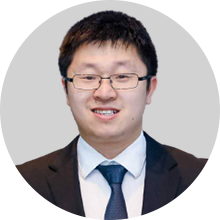Lining Ju brings his unique background in mechanical engineering to find better solutions to help diagnose, treat, and control blood clotting diseases.
He has established a new field called 'mechanobiology' linking the mechanical forces behind blood flow and their effects on hematological proteins and blood clotting cells.
In the mechanobiology research program, Lining Ju has invented innovative biomechanical nanotools that advance our knowledge of blood clotting: Blood flow disturbance in a person's veins and arteries generates mechanical forces that rapidly trigger blood clotting, thereafter lead to heart attacks and stroke. Through his world-leading discovery of a series of mechanosensory ('force-sensing') proteins, and by understanding how blood cells utilize these force sensors to process mechanical cues in circulation, Lining Ju has been able to develop a novel therapeutic strategy, known as 'Mechano-Medicine', to intervene and prevent disease-forming clots early and efficiently.
To investigate mechanobiology at single-cellular to molecular scales, Lining Ju has invented a nano-tool called the Biomembrane Force Probe (BFP). It provides precise controls and quantitative readouts in both mechanical and chemical terms, which is particularly suited for live-cell mechanosensing studies over the traditional methods in biochemistry and cell biology that are usually population-averaged and non-realtime.
Since 2015, Lining Ju has continued to upgrade this pioneering technology. By combining BFP with fluorescence microscopy, Lining Ju became the first in the world capable of correlating the mechanical stimulation profile with the real-time cellular responses of a single platelet with the superior temporal, spatial, and force resolutions at 0.7 milli-second, 3 nano-meter, and 1 pico-newton respectively.
To further the platelet mechanobiology studies in a physiological context with dynamic blood flow, Lining Ju complemented the BFP with other cutting-edge technologies, including flow disturbance mimicking microfluidics, micropatterning flow chambers, in-suspension cone-and-plate rheometry, and high-resolution confocal imaging in whole blood perfusion. This approach is called 4Ms: Mechanics, Microscopy, Microfabrication & Mouse model, which integrates the fields of biomechanical engineering, imaging, microfluidics, and molecular biology. Relying on the utility and power of the 4Ms approach and strategy, Lining Ju was recognized by the Australian Museum Eureka Prize for Outstanding Early Career Researcher in 2020.




